If I told you I had a new damson scarf, would you know what color it is?
How about if I told you that at my farm, come September, we’re in damson heaven?
Here’s a clue …
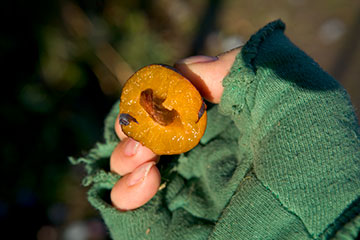
(DAM-zuhn, -suhn)
1. A variety of small plum or its fruit. (Prunus domestica subsp. insititia, or sometimes Prunus insititia)
2. A dark purple color.
Turns out, the plum I love so much is also a color—the same deep purple as the signature skin of the little damson plum. Here at my farm, I have an abundance of these tasty little purple beauties. They’re sometimes called Italian prune-plums, and each little plum is a egg-shaped delicacy, with smooth, purple skin that pops in half, exposing a golden, sweet flesh that separates easily from the pit, lending itself to effortless eating, canning, and drying. They’re an ideal fruit tree for regions with fickle spring weather, and grow well in Zones 4-9. They do ripen late, from September to October, but a slight frost only sweetens them.
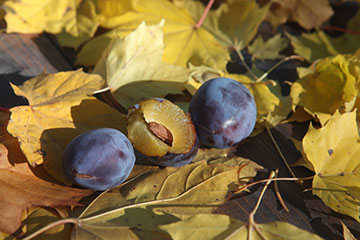
Plums are widely cultivated throughout the U.S., since there are varieties suitable for growing in every state. Some varieties have been developed from the earlier wild forms, some have been bred for maximum fruit production, others have been bred for larger and more abundant blossoms, and some for decoration alone. But the variety I inherited when I bought my farm is on the wild side. They’re prolific producers and reproduce easily. Pests don’t bother them at all. The deer eat the fallen fruit, but really nothing seems to deter the trees’ determination to multiply. However, if a shoot sprouts where I don’t want it, it’s no problem simply to weed it out. I suspect some of my trees, with big thick trunks, are well over 100 years old.
And since they grow fast, I’ve begun to transplant some of the shoots that sprout up around the older trees along my fence lines. In some cases, they just show up right where I want them and start growing. All I need to do then is prune the lower branches and keep the saplings woven in and out of my existing wire fences. So, by the time my fenceposts start to rot from age, I’ll have a permanent, care-free, deer-deterrent barrier that provides an abundance of food.
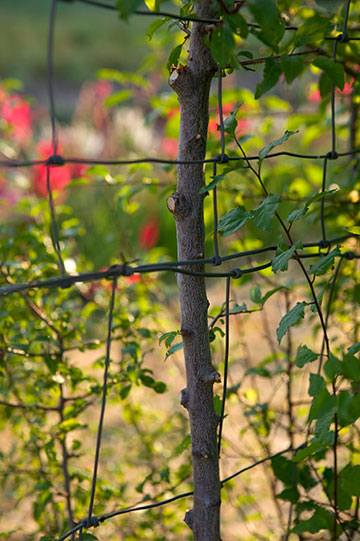
“The mind I love must have wild places, a tangled orchard where dark damsons drop in the heavy grass, an overgrown little wood, the chance of a snake or two, a pool that nobody’s fathomed the depth of, and paths threaded with flowers planted by the mind.”
– The Journal of Katherine Mansfield, 1927
Soon, we’ll be up to our elbows in luscious, ripe, damson plums!
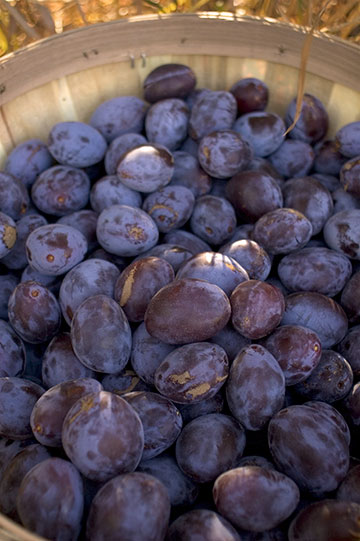
… Time for plum jam,
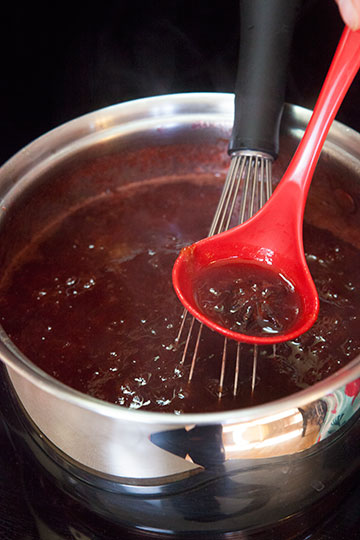
and plum coffee cake!
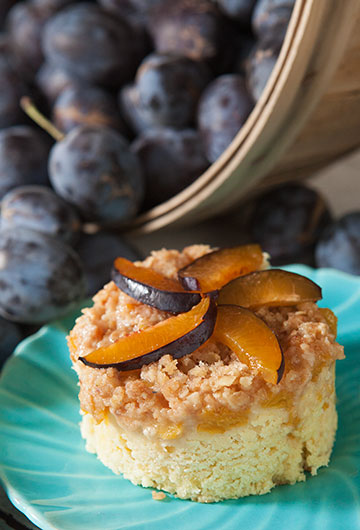
To purchase damson plum saplings, try Nature Hills Nursery.





















































What a wonderful essay on your dear Damson plums MaryJane ! I ,unlike most Americans, love prunes,( now renamed ” dried plums” but the food industry). In Europe they are used for fillings in endless recipes, must be my Hungarian/Gypsy roots talking to me. I do have an ornamental flowering Plum at my farmette and it is truly a joy in spring when it blooms pink on burgundy foliage looking like the ancient Chinese scroll paintings of such shrubs. There is an antique Chinese ginger jar made into a lamp in my living room with such branches painted on it. But, alas, my little tree has no fruit.
So ,MJ, give us some more plum and prune recipes, please?
I have never seen these and sound so tasty. But I especially love that you can use it as a barrier while also producing fruit.